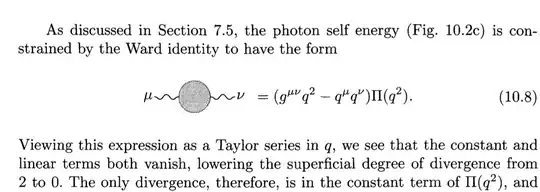Taylor expansion for a function of four variables is well defined whether or not these variables can be interpreted as components of a 4-vector. For fixed values of $\mu$ and $\nu$, we have
\begin{align}
f^{\mu\nu}(q) = f^{\mu\nu}(0) + q^\rho \partial_\rho f^{\mu\nu}(0) + \frac{1}{2} q^\rho q^\sigma \partial_\rho \partial_\sigma f^{\mu\nu}(0) + O(q^3).
\end{align}
You can derive this by iteratively expanding in each component of $q$ or you can consider $f^{\mu\nu}(\lambda q)$ and do a single variable expansion around $\lambda = 0$.
In any case, the claims are easily verifiable for
\begin{align}
f^{\mu\nu}(q) = (g^{\mu\nu} q^2 - q^\mu q^\nu) \Pi(q^2).
\end{align}
This function clearly vanishes at $q = 0$ and the first derivative is
\begin{align}
\partial_\rho f^{\mu\nu}(q) = (2q_\rho g^{\mu\nu} - q^\nu \delta^\mu_\rho - q^\mu \delta^\nu_\rho) \Pi(q^2) + 2 q_\rho (g^{\mu\nu} q^2 - q^\mu q^\nu) \Pi^{\prime}(q^2)
\end{align}
which also vanishes at $q = 0$.
